How Pet Dander Impacts Lung and Sinus Health

While it’s safe to say we love our pets, we might not feel the same way about their dander. An allergy to dander (the dead skin pets shed) is common, yet understanding and finding relief from pet allergies is a little more complicated. Reactions to dander are more than nasal irritation, they really start in our immune system. [1] A healthy immune system seeks out foreign bodies and works to get rid of them. When you have pet allergies, you have a hypersensitive immune system.
The Basics of Pet Allergies
Allergies, while cumbersome, are merely a mistake your body makes when it perceives everyday environmental compounds as a threat. Symptoms such as red and watery eyes, a runny nose, and sneezing are all common. Research has shown that the mind has a lot to do with the allergic response. People allergic to pollen, for example, can start displaying allergic symptoms simply by imagining a field of flowers. Sometimes allergies to animals can be even worse, especially if you have some furry friends living in your home.
A hypersensitive immune system means that instead of just reacting to specific bugs that could really make you sick, your immune system also reacts to harmless proteins (called allergens) in your pet’s dander. It’s these allergens that build up on your pet’s fur — sometimes sticking to walls, furniture, or clothes — and could even keep their strength for months. And because pet allergens can travel through the air due to petting or grooming our animals, even places without pets could have concerns. So, how can pet dander impact our lung and sinus health?
If you suffer from allergies, you likely have already experienced issues (itching, redness, swelling) at your eyes and nose. This is because many of your sinuses are found in and around your head. Now, if those allergens get into the membranes of your eyes or nose, a sensitive person could be left with symptoms like red, itchy eyes, sneezing, or a stuffy nose. Often, though, these allergens are small enough to get into the lungs, leading to breathing difficulties. But if a person already has asthma, these allergens could lead to a severe attack.
Are There Natural Solutions to Pet Allergies?
Does having an allergy to animals mean you have to get rid of your pet? Probably not. [2] If your allergies are mild, taking simple steps (like keeping your pet clean and off the furniture and not allowing dust to accumulate on surfaces) will likely be successful in cutting down on pet dander. There are also shots available that involve using the actual allergen — in this case, dander extract — to control symptoms. [3] [4] I'm always a little skeptical about that sort of approach but you'd have to decide for yourself.
References (4)
- American Lung Association. Pet Dander. American Lung Association.
- Institute of Medicine, Division of Health Promotion, Indoor Air and Disease Prevention. Clearing the Air: Asthma and Indoor Air Exposures. Institute of Medicine, Division of Health Promotion, Indoor Air and Disease Prevention.
- Williams, A. A. et al. The Efficacy of Allergen Immunotherapy with Cat Dander in Reducing Symptoms in Clinical Practice. Biomed Research International.
- Moote, W. & Kim, H. Allergen-Specific Immunotherapy. Allergy, Asthma & Clinical Immunology. 7 (1).
†Results may vary. Information and statements made are for education purposes and are not intended to replace the advice of your doctor. If you have a severe medical condition or health concern, see your physician.

Dr. Edward Group, DC
FOUNDER | HEALER | ADVOCATEDr. Group, DC is a healer and alternative health advocate, and an industry leader and innovator in the field of natural health who is dedicated to helping others. He is a registered doctor of chiropractic (DC), a naturopathic practitioner (NP), and proud alum of Harvard Business School and MIT Sloan School of Management. Dr. Group, DC is the founder of Global Healing – a mission and vision he has shared through best-selling books and frequent media appearances. He aims to spread his message of positivity, hope, and wellness throughout the world.










